

Upper Peninsula
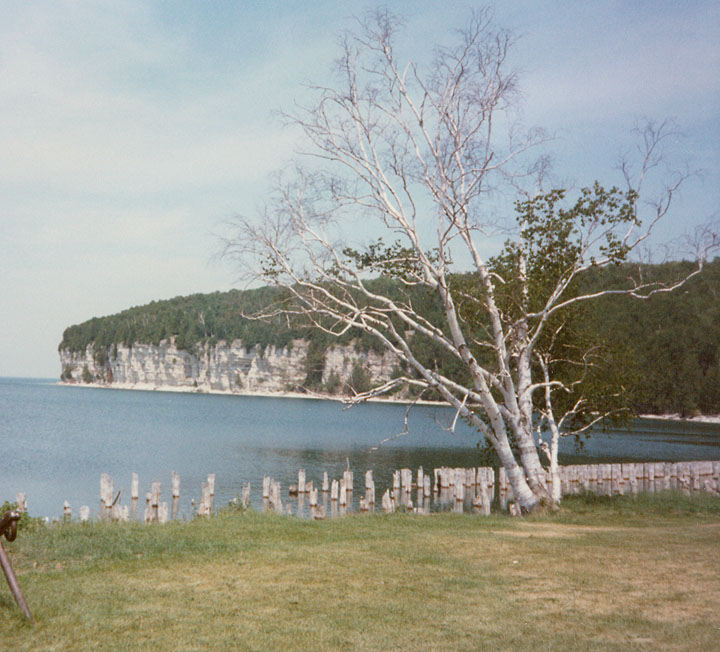
bluffs along the Lake Michigan shoreline
The Upper Peninsula is bordered on
the east by the Saint Mary's River, on the south by the Straits of Mackinac and
Lakes Huron and Michigan, on the west by Wisconsin, and on the north by Lake
Superior. Lansing is the capital of Michigan. Detroit is the largest city.
The eastern half of the Upper Peninsula is also fairly level, but there are vast
areas of swampland formed when glacial action hindered drainage of the area.
Along its northern border, on the shore of Lake Superior, are sandstone
tablelands, from which have been carved the Pictured Rocks, one of Michigan's
most interesting natural features. Moisture has released the chemicals embedded
in this sandstone formation to color the rocks in hues of yellow, brown, green,
and blue. Glacial, wind, and water action has eroded them into fantastic shapes.
Big Bay
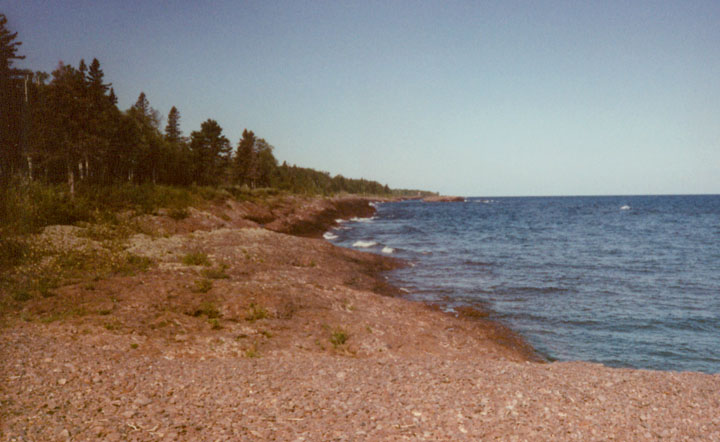
Lake Superior shoreline
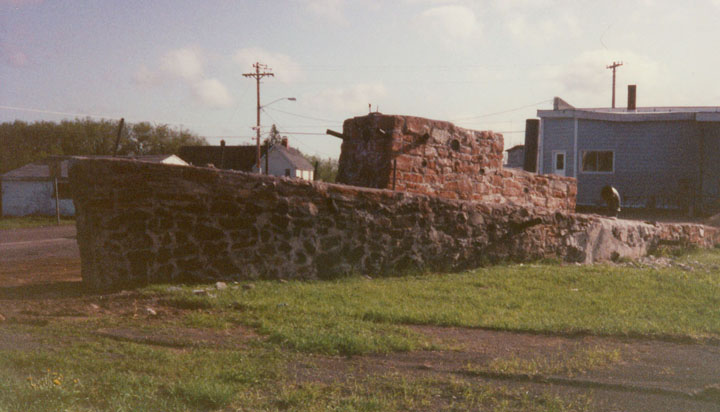
stone ship
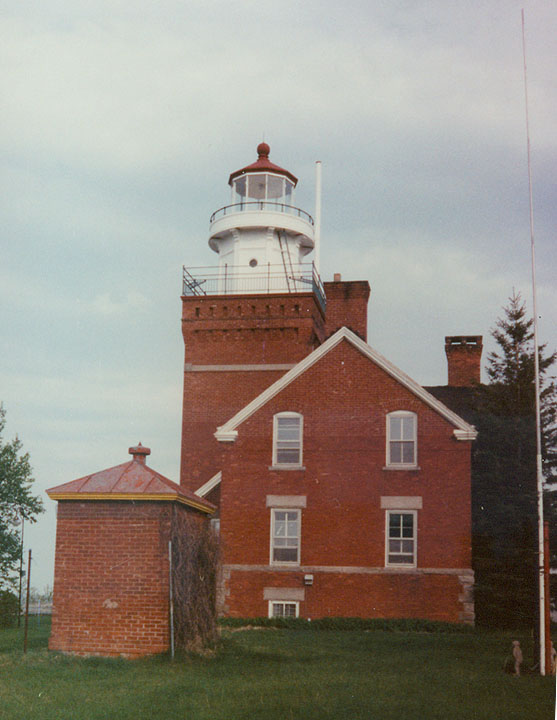
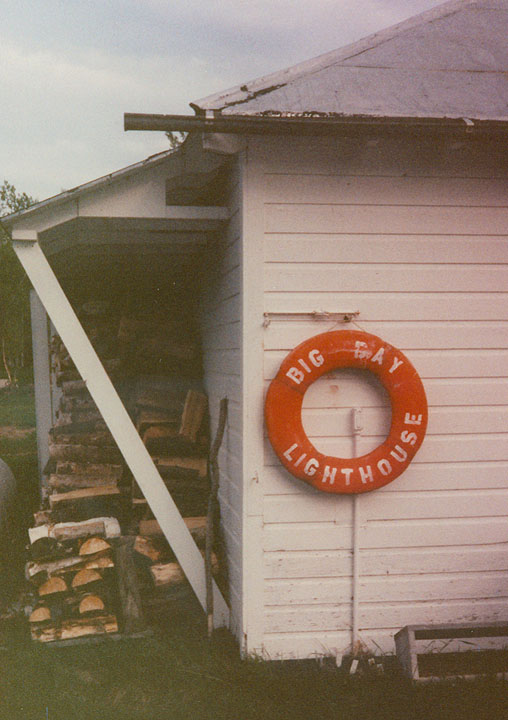
Big Bay lighthouse
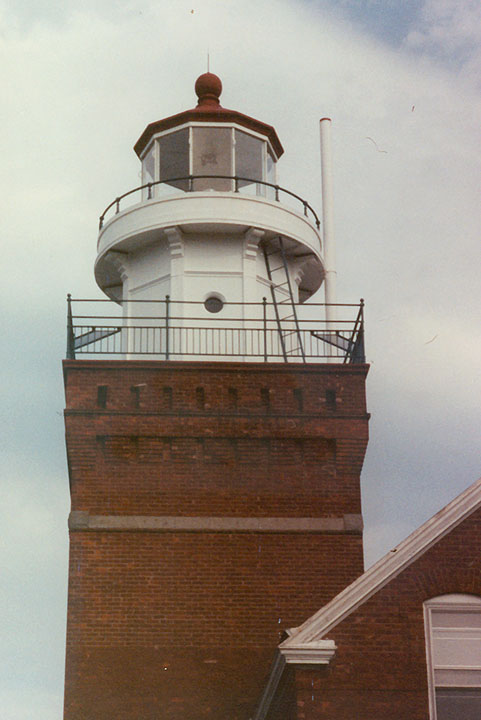
the light tower
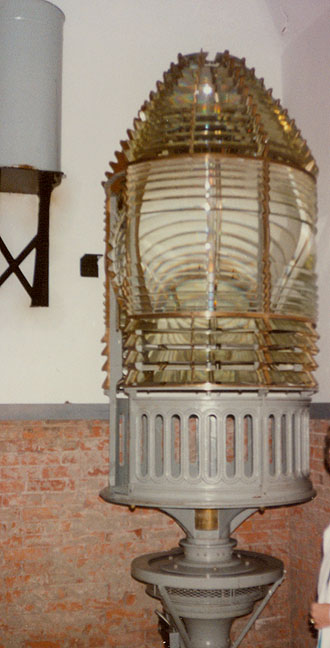
the fresnel lens of the light
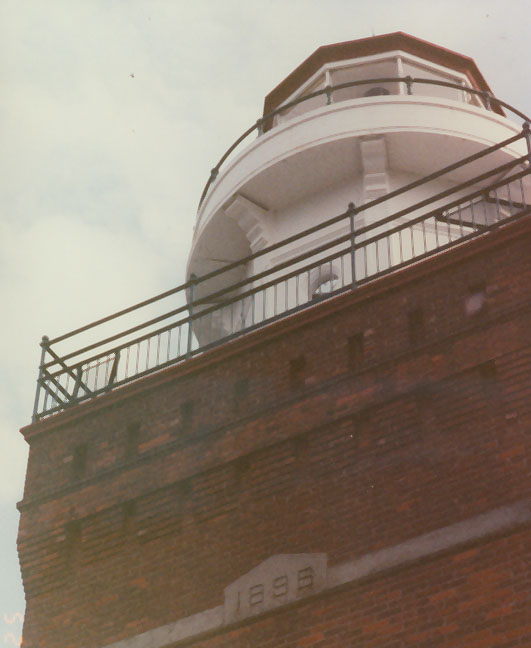
lighthouse built in 1895

shining out over the Lake Superior shore
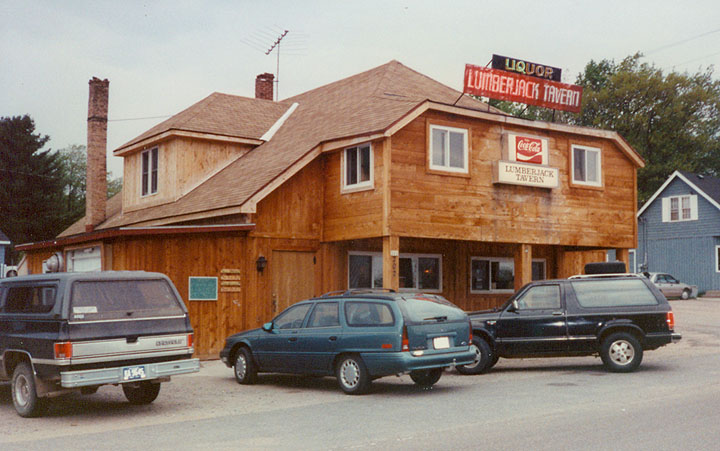
tavern
famous from the movie "Anatomy of a Murder" 1959
The author, Michigan Supreme Court justice John D. Voelker, wrote the novel under the pen name Robert Traver. Voelker died in March 1991, at the age of 87, after having lived his entire life in Ishpeming. He loved fishing and wrote a number of classic books on the subject.
As a supreme court justice for three years, he wrote 99 opinions, all so carefully crafted and readable that they stand out on law library shelves as literate pearls among the dull, dry, prose produced by lesser justices.
Voelker wrote "Anatomy" based on the 1952 Big Bay Lumberjack Tavern murder trial. Voelker said that any resemblance to the Lumberjack trial was "purely coincidental," despite the similarities.
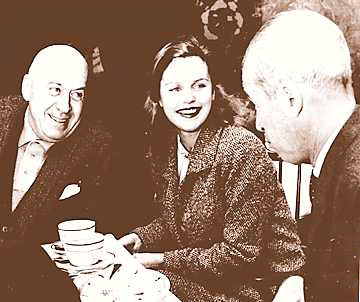 Director Otto Preminger meets with his stars Lee Remick and James
Stewart.
Director Otto Preminger meets with his stars Lee Remick and James
Stewart. |
The story tells of a bartender murdered by an Army Lieutenant (Ben Gazzara) who claims the victim had beaten and raped his wife (Lee Remick). She supports her husband's version but no physical evidence supports the rape incident. The wife was a well known tramp about camp and was accused of lying to protect her husband. The defense (Jimmy Stewart) claimed that both were telling the truth and the husband became temporarily insane and killed during his rage over what happened to his wife.
The movie was a hit and was Hollywood's first on-screen use of such words as "intercourse," "contraceptive," "spermatogenisis," and "sexual climax." Chicago police tried to block the first screening of the movie in that city unless these "obscenities" were deleted. A federal judge overruled the Chicago police, probably having heard the words before. The movie marked the biggest challenge to the movie Morals Code since Clark Gable said "damn" in "Gone With the Wind."
The judge was played by Boston attorney Joseph N. Welch, who had become famous for his clashes with the notorious Sen. Joseph McCarthy during the nationally televised Army-McCarthy hearings. Welch's wife played a juror in the movie.
Detroit News writer Al Weitschat wrote, "There could be no quarrel with the choice of Welch as Judge Weaver. He gives this amiable disciplinarian with the brisk sense of humor the authentic touch, and his handling of the comedy draws so many laughs he comes close to stealing the show."
Director Otto Preminger led his group of 150 movie makers to the Upper Peninsula, much to the delight of local residents. He also used about 300 extras who were paid $10 a day. (In Hollywood the pay was $22.50 a day for extras). Those with speaking roles $90 a day. More than 1,500 applied for the jobs.
"The floors on the city commission chambers were almost broken down by the crowd on tryout day," Oral "Moose" Lacombe recalled in 1978.
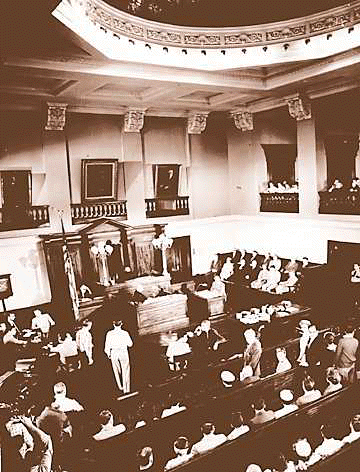 Despite the presence of actors like James Stewart, Lee Remick and George
C. Scott, the real star of the movie was the grand old courtroom at
Marquette.
Despite the presence of actors like James Stewart, Lee Remick and George
C. Scott, the real star of the movie was the grand old courtroom at
Marquette. |
LaCombe said that Preminger stood in front of the crowd and pointed to the people he had selected. "You're on the jury," Preminger told Lacombe.
LaCombe said he collected his fee every day for the 23 days it took.
"They made us wear the exact same clothing every day. At the end of each filming session, the garments were laundered."
Lacombe said one day he put on a tie clasp and the cameraman ordered him to remove it.
LaCombe said that the movie jurors formed a group that had annual reunions until most had died. LaComb clipped every newspaper and magazine article about the film.
"I wouldn't sell the experience I had for a million dollars," he said, despite the fact that his actual duties required only that he sit there "like a mummy."
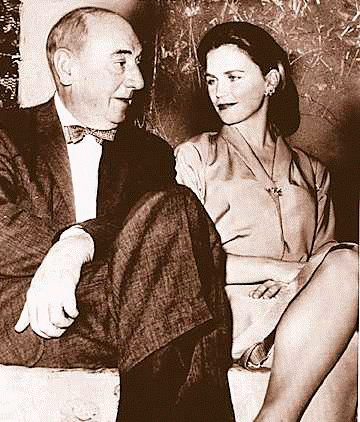 Boston lawyer Joseph Welch, who became famous by clashing with Sen.
Joseph McCarthy during the Army-McCarthy hearings in the 1950s, played
the judge in the movie. He's shown here with co-star Lee Remick.
Boston lawyer Joseph Welch, who became famous by clashing with Sen.
Joseph McCarthy during the Army-McCarthy hearings in the 1950s, played
the judge in the movie. He's shown here with co-star Lee Remick.
|
Marquette's County Clerk Lloyd LeVasseur got the role of Clovis Pidgeon, the movie's county clerk. Lavasseur, born in 1903, the year the cornerstone for the historic Marquette County Courthouse was laid, also got roles for his his real-life assistants, Millie Johnson and Gladys Ogert.
Ishpeming businessman Robert B. Brebner played the victim. "As a matter of fact," he laughed in a 1959 interview, "I'm dead before the film starts!
"The photographer must have taken 200 pictures of me," he said, "out on the ice...fishing...in the woods...hunting....in the gym...punching the heavy bag...tossing a basketball."
"The worst was yet to come...at the trial the police introduce pictures of the corpse--me!"
His acting was limited to being taken to the tavern where he was made up with five bullet holes, and then to the morgue. "We had to wait," he said. "There was a real customer ahead of us."
Snuffy the dog endeared himself to the star, Stewart, by lighting a flashlight with his paw, then carrying the light to his trainer. "Much better than cats," Stewart opined.
Michiganian and actor George C. Scott played the skillful and unrelenting prosecuting attorney, Claude Dancer: "I found making 'Anatomy' an exhilarating experience. But the techniques of moviemaking often hem an actor in and impose restrictions that are frustrating.
"My own massive ugliness sort of frightened them. Maybe that's why they continually tell me to tone down. I find it difficult because I like to feel and reflect the power of a good role."
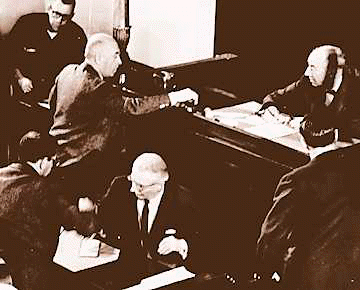 Preminger gives some last-minute directions to Welch before the cameras
roll.
Preminger gives some last-minute directions to Welch before the cameras
roll. |
Preminger pegged Scott as a "sympathetic heavy of the Humphry Bogart type" and had expected him to get a supporting actor Oscar.
Weitschat wrote of Scott's performance, "As much as Stewart, he is responsible for holding attention in the lengthly trial scenes. Scott makes Dancer a dynamic little man with beady eyes and a sinister way of sneaking up on a witness."
Preminger described the courthouse as "one we would find difficulty duplicating on a Hollywood stage." Additional scenes shot at Ishpeming, Big Bay (called Thunder Bay in the film) and Michagaumee also appeared in the movie.
The movie company spent six weeks in the area and left $300,000 behind, as well as giving local residents their first up-close view of the movie industry and its stars.
Among the stars, Lee Remick had become a quick replacement for Lana Turner who quit because she objected to the wardrobe and to Preminger's "strong" language.
Remick, according to Weitschat, "projects the proper mood and manner of the predatory female, who always seems to have men on her mind, but dissolves into a frightened girl on the stand."
The film had its world premiere at the United Artists Theater in Detroit July 1, 1959. Searchlight beams roamed the skies while cameras focused on stars and dignitaries. Beauty queens from the Freedom Festival also graced the event.
Governor and Mrs. G. Mennen Williams, Mayor and Mrs. Louis C. Miriani, and Windsor Mayor Michael Patrick joined Preminger, Remick, Scott, Arthur O'Connell, Welch and his wife, and Voelker and his wife at the premiere.
Of the movie, Weitschat proclaimed, "for the first time on the screen, appear the clinical details of a sexual offense heretofore confined to medical and court records."
Fayette
a Nineteenth-century company town

iron furnace
Seventeen miles south of US-2, Historic Fayette Town site rests beside the limestone cliffs, forests and natural harbor that made it an ideal site for smelting iron in 1867. That year, the Jackson Iron Company began building its blast furnace there, across the bay from Escanaba. Soon some 500 people lived in Fayette. French Canadians, Belgians, Irish, Germans, Scandinavians, Bohemians — they produced 229,288 tons of pig iron and created a community that enjoyed baseball, horse races, parties and concerts by the Fayette Cornet Band.
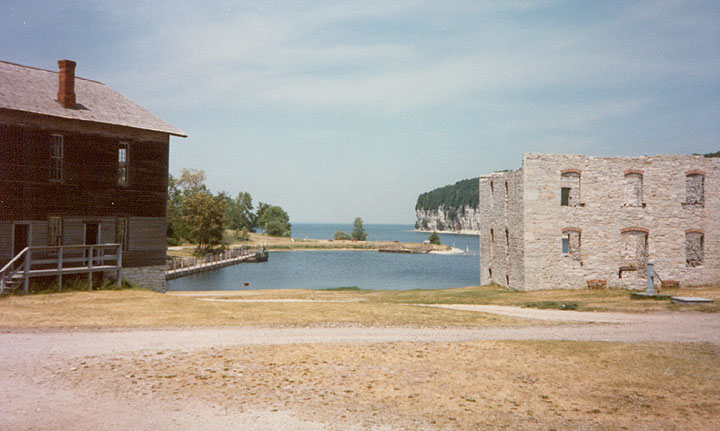
iron ore harbor
When the furnace shut down in 1891, the town died. Today, its century-old kilns, furnaces, homes, opera house, hotel and company store offer visitors a unique opportunity to step back in time and explore a Michigan memory.

iron furnace

oven for preparing charcoal
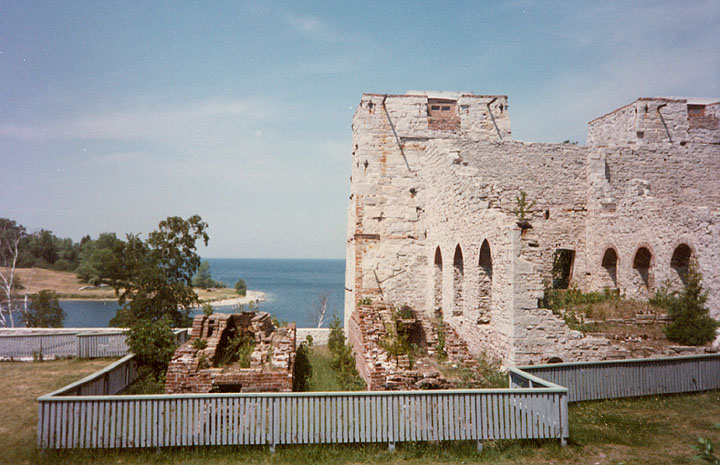
iron furnace building
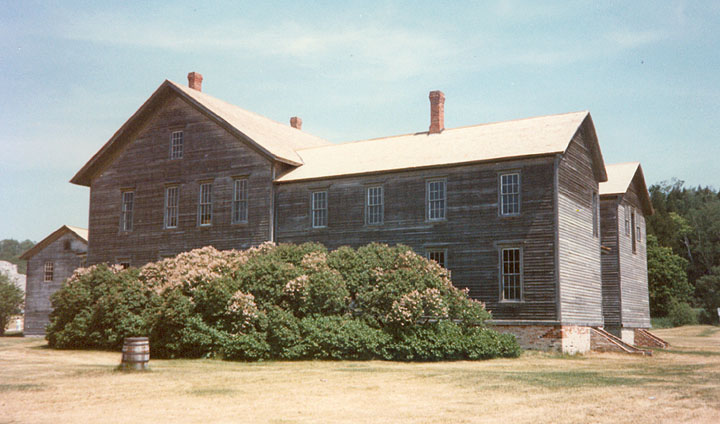
living quarters
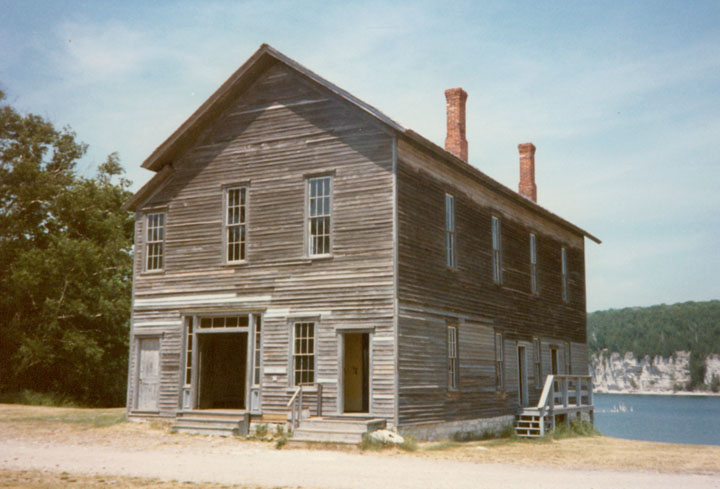
company store
Another pronounced feature of the Upper Peninsula is the Niagara Escarpment.
Running along the southern edge of the peninsula's eastern wing is a belt of
limestone hills, which stand out because the weaker rocks of the surrounding
area have been worn away through erosion. The Niagara Escarpment extends
westward from New York, forming a continuous horseshoe like landform around
Lakes Huron and Michigan. The many peninsulas and islands that lie between the
basins of Lake Huron and Georgian Bay are exposed sections of the Niagara
Escarpment, which generally rises to heights of 240 to 300 m (800 to 1,000 ft)
in Michigan.
The Superior Upland, in the western portion of the Upper Peninsula, is a region
of ancient and resistant Precambrian time rock. Repeated glacial invasions have
removed much of the sedimentary deposits of sandstone and limestone, leaving
granite, gneiss, and other igneous and metamorphic rock exposed. Streams are
generally short with many rapids and falls, especially those that flow into Lake
Superior. Lakes and swamps are abundant. Michigan's most important copper
ore-bearing region, the Keweenaw Peninsula, juts north into Lake Superior in the
western part of the Upper Peninsula. The backbone of the Keweenaw Peninsula is
formed by an extension of the Copper Range of Michigan and Wisconsin. The Huron
Mountains and the Porcupine Mountains, containing the state's highest elevation
of 603 m (1,979 ft) atop Mount Arvon, lie south and west of the Keweenaw
Peninsula. The iron-bearing Gogebic Range is also in the Superior Upland, as is
the Menominee Iron Range.
Text from Microsoft Encarta